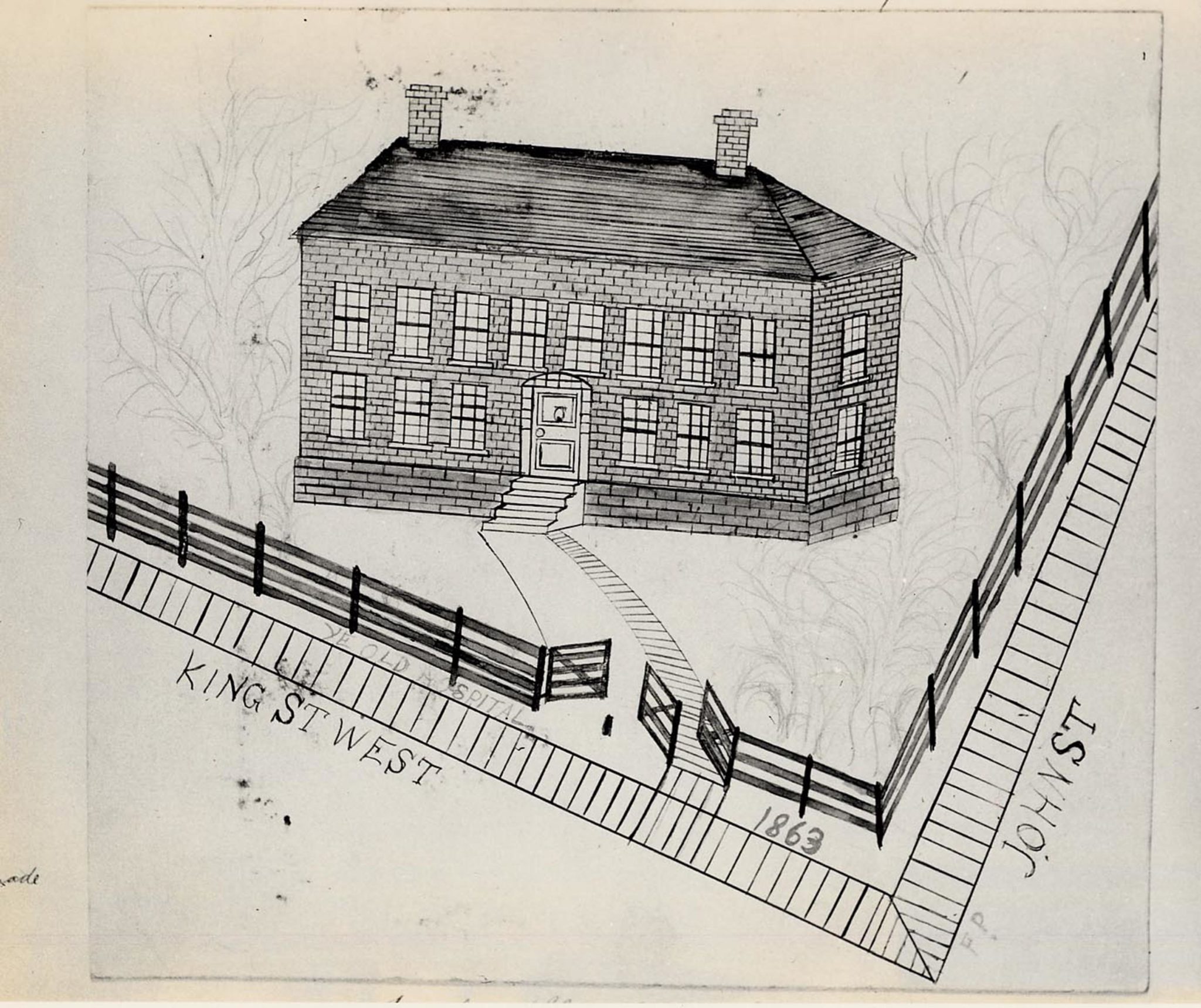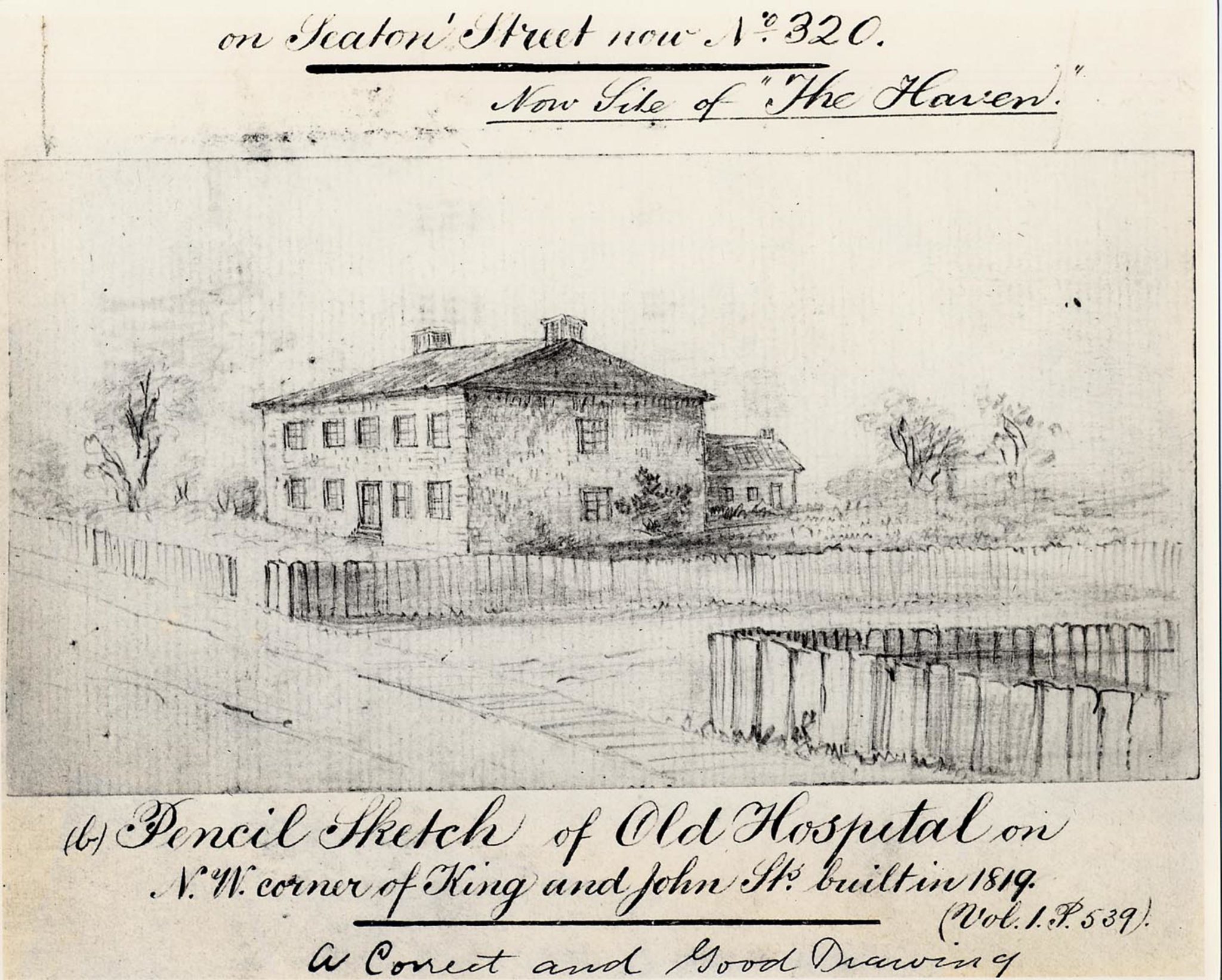ASI conducted archaeological investigations at the site of Toronto’s first General Hospital between 2006 and 2010. The hospital was situated on the Town of York Hospital Reserve, as illustrated on maps of the day. Our work began at 326-358 King Street West in downtown Toronto, now home to the TIFF Bell Lightbox. Excavations were required to determine if remains of the hospital had survived. During our investigations, a number of long trenches were excavated, revealing robbed out foundations of the old hospital and six post-demolition leveling fills in the formal grounds that fronted it.

Later excavations on adjacent properties to the north revealed a portion of the stone foundation and two interior plank floor surfaces of the main two-storey hospital building, robbed out exterior foundations of the hospital’s brick rear wing, exterior plank walkways, portions of a stone shale footing for the wood frame building to the north of the hospital’s brick rear wing, and a very complex drainage system featuring, brick, wood, and stone drains as well as a rectangular wood frame cess pit and a stone-lined privy. Tens of thousands of artifacts were recovered in the process.
The two-storey hospital opened in June of 1829, and soon afterward, other buildings were constructed nearby, including a hospital for cholera patients, an “Emigrant Building” and numerous structures to care for typhus, or “ship fever,” patients. The latter was a result of a spike in Irish immigration after the potato famine in the 1840s. During the summer of 1847, the Hospital Reserve buildings held over a thousand patients struck down by the disease, and over three hundred patients died in a matter of three months. By the end of the outbreak, approximately 1,200 people had lost their lives, including Toronto Hospital doctor, George Robert Grasett, and Bishop Michael Power. (Firth 1966; Globe, July 17, September 1, 1847).
A new hospital was constructed on Gerrard Street in 1854 and the old building was used by the provincial government until 1858. It was demolished in 1862 and the hospital grounds remained vacant until the late 1860s.
The Toronto Hospital artifacts shed light on Irish politics at this point in history. Some of the most telling of the finds are pipe fragments. Made of white ball clay, those that feature both the Prince of Wales feathers and the Irish harp demonstrate that the owner accepted the idea of Ireland joining the United Kingdom.

Similarly, a copper-alloy brooch was discovered with an Irish Lady Harp, surrounded by an English Rose and a Scottish Thistle. This unison also symbolizes a belief in Ireland belonging to a UK – one with England and Scotland. “Friendly societies” produced items like this so that members could display their support for such a movement.
An early 19th century brass button was also uncovered in a builder’s trench. The Latin phrase “In Deo est omnis mihi fides,” which translates to “In God is all my trust,” was printed around the button and accompanied by the Palmer family crest (a family from Co. Mayo, Ireland) (Fairborn 2011; Nichols 1853:141). On the back of the button are the words JONES, CORK, HILL, and DUBLIN, indicating that the button was produced by Edward Jones, an early 19th century button manufacturer, located at 2 Cork Hill in Dublin, Ireland (Watson 1815:63).
The site yielded many other artifacts relating to the hospital, including chamber pots, dishes, brushes, and other personal items.










